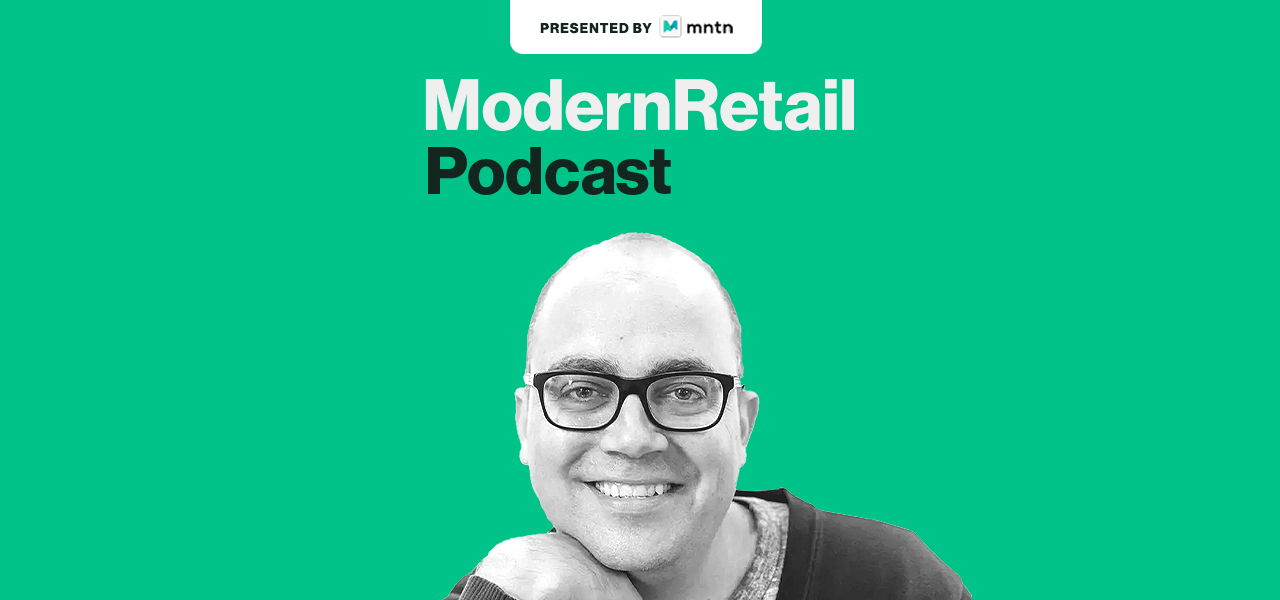‘We didn’t expect the consumer response to be as great’: GoodwillFinds CEO Matthew Kaness on bringing the thrifting experience online

Subscribe: Apple Podcasts • Spotify
GoodwillFinds is trying to bring the century-old Goodwill network to the era of ThredUp.
The new e-commerce platform has only been live since October, but has already seen pretty steady growth. When it first hit the market, GoodwillFinds offered 100,000 items for sale from four different Goodwill locations around the country. Now, that number is approaching 200,000 items. CEO Matthew Kaness said the organization plans to have a catalog of over 1 million products for sale by the end of the year. GoodwillFinds is in the process of onboarding four more locations — and Kaness said dozens of other locations are in the pipeline to be added in 2023.
Kaness joined the Modern Retail Podcast to talk about the growing program. While most anyone in the U.S. knows about Goodwill, the organization has never had a centralized online presence. The idea with GoodwillFinds is to try and do just that — as well as compete with other digital resale leaders like Thredup and the RealReal.
While the platform has only been around for a few months, Kaness said that the struggle hasn’t been finding customers, but instead making sure the program can run smoothly while scaling. “We didn’t expect the consumer response to be as great,” he said. “So we are chasing some of the operations — staffing up customer service, and adding more staff at pick, pack and ship [sections] within the various Goodwills.”
The business is also trying to figure out what sells best on the online platform. While apparel has been one of Goodwill’s most popular categories, Kaness said GoodwillFinds has seen “such a strong demand for non-clothing.” In fact, apparel currently only accounts for one-quarter of the platform’s sales.
The platform is still constantly being upgraded, with more products and features being added everyday. But the hope is to create the Goodwill experience online. That being said, Kaness was clear that the well-known treasure-hunt Goodwill experience can’t be mimicked by an online app. “What we’re trying to do is augment and expand and enhance the experience,” he said.
Here are a few highlights from the conversation, which have been lightly edited for clarity.
On Goodwill’s past e-commerce programs
“Goodwill, at the member level, has been selling online for decades — mostly as 3P sellers in marketplaces like Amazon and eBay. The bulk of secondhand books that you buy through Amazon comes from a Goodwill. So they’ve been participating. And a lot of the bigger Goodwills have a pretty sophisticated, mature e-commerce operation at their donation centers, selling as third-party sellers on these various marketplaces. There have been regional efforts in the past within the network to build up a separate marketplace that is managed and that the members sell through. They have been auction-based and focus on certain categories. What we’re doing here is very different. It’s much more akin to… the ThredUps and the RealReals and the Depops, where we have a unified catalog, we have a single shopping experience, and we’re capturing 1P data so that we can acquire, retain, re-market to customers on behalf of all the sellers.”
The three Goodwill shoppers
“My view of it is that there are three segments. The first segment is the value shopper that’s looking for a deal. Those are households that need to shop secondhand because of price. It’s also the consumer that just loves looking for deals and is willing to invest the time and energy to shop at multiple locations to find one item. And that mimics who shops within Goodwill stores. Then there’s the more trend-driven folks that like vintage, that like thrifting, that like to put together unique outfits. Because if you buy something thrift, by definition, nobody else can be wearing it. … We’re seeing that customer show up at GoodwillFinds, which has been great for us. And then there’s this more aspirational customer segment: the conscious consumer, the one who really thinks about where they’re shopping. They want to be purpose-driven, and they want to align with the values and mission of the brands and the stores that they shop at. They care about sustainability, they care about circularity. And so we’re seeing, at least from an engagement perspective, a huge response from that part of the market. But we’re still learning what that customer wants to buy. So at scale, we’ll want to serve all three.”
Can the treasure hunt experience be brought online?
“There’s a little bit of a tradeoff between that thrill of the hunt and convenience. I think, in total, the convenience that this provides greatly outweighs [the hunt]. But, over time, we’re going to want to provide customers of Goodwill a multi-channel shopping experience so they can do both. So we’re certainly not supplanting shopping in a local Goodwill. What we’re trying to do is augment and expand and enhance the experience. Because, as anyone knows who’s been in retail for a while, a multi-channel shopper is worth a lot more. So we’re taking that approach that, as we scale, we’ll integrate much more of the personalization, the retention marketing, and the way we communicate and provide incremental value to consumers locally in a multi-channel way. For instance, on our roadmap it is to eventually provide digital receipts; on our roadmap is to be able to reward our best donors with values to go shop; on our roadmap is to be able to capture information about households and individuals within our house file and make them aware of services that are available to them or their neighbors at their local Goodwill.”

